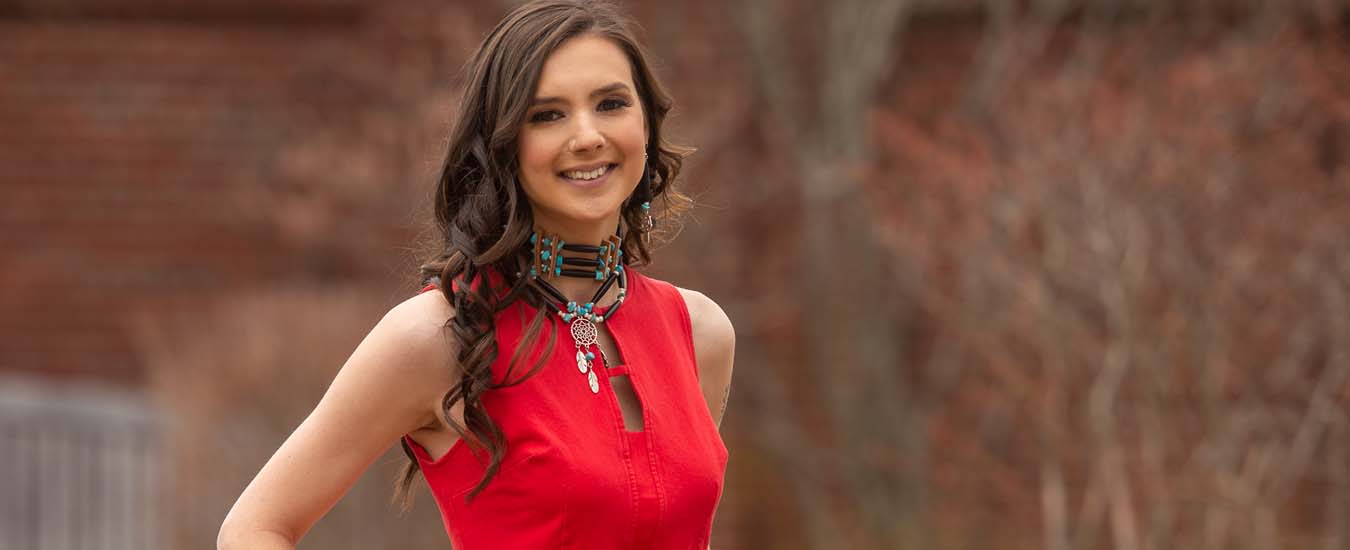Getting to know Kayla Mansfield-Brown
Kayla Mansfield-Brown (Dancing Deer) embodies the resilience of the Mi’kmaq people. As a top student at Acadia University, the mother of four graduated with two degrees, earning many accolades along the way, including Acadia’s 2019 Graduate Student of the Year Award and their 2021 Outstanding Young Alumni Award. One Woman—an international organization dedicated to female empowerment—recognized her advocacy work on justice, gender equality and Indigenous rights with their 2018 Fearless Leader award. She works as an Employment Support Worker for the Aboriginal People’s Training and Employment Commission, a division of the Native Council of Nova Scotia. Saltscapes spoke with Kayla Mansfield-Brown about adversity, matriarchy and 13,000 years of memory.
Where did you grow up?
In Liverpool, Oqomkikiaq in Mi’kmaq. It means a dry, sandy place. It’s a very descriptive language.
Was it spoken around you as a child?
It wasn’t. I didn’t know a lot about our Mi’kmaq ancestry until I was 10 when my mom got a job with the Native Council. I traveled with her and got to be around other Indigenous people. A lot of it came from my mom learning about her ancestry.
What’s it like to learn the language your ancestors spoke?
It’s more a process of remembering who you are. Indigenous knowledge is embedded in our DNA. It’s reflective of our relationship with the land and to each other. Mi’kmaq is resilient because we are a resilient people. It’s survived almost 13,000 years. There’s strength in knowing that.
Tell me about your Mi’kmaq name, Dancing Deer.
It was shared with me in an all-women sacred ceremony by a Mi’kmaw elder. “Dancing” illustrates the way I’ve carried myself through life’s adversities. “Lentuk” or “Deer” signifies my small legs, but their strength to keep me moving. She also told me that deer have a willingness to protect their young. As a mom, that’s what I do.
What did the elder mean by adversity?
The challenges I’ve overcome—systemic racism and stereotypes associated with young, Indigenous women. We were a low-income family. I had my first son at a young age. I moved away without a lot of support to continue my education and lived in a woman’s shelter during that time.
Who are the most influential people in your life?
The women who have supported me into womanhood, but my mom is my best friend. She taught me to be independent, resourceful, truthful and humble, but also to be courageous and embrace life’s challenges and lessons. She’s always been the matriarch, the woman who carries strength, compassion and knowledge.
Women seem to be held in the highest regard in Mi’kmaq culture.
Women are life givers. They carry our bloodline forward and produce the next generation by sharing knowledge. For me, it’s a lifelong journey of understanding myself and growing so that I can become the best person for my family and give back to my community. As a woman going through my journey, I was so unheard and so unseen that I want other Indigenous women to know they are valued for who they are.
Will your daughter take after you and your mom?
I certainly hope so. She already knows how to light smudge and how to use the eagle feather during smudge. It’s just so sweet to watch. She has this unapologetic nature about her. She’s very strong already as a young girl, so I look forward to seeing what she’s like as a young woman.
